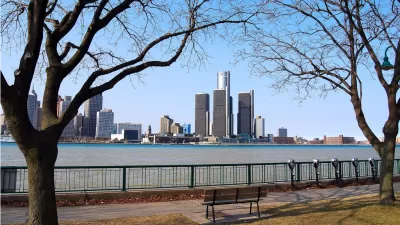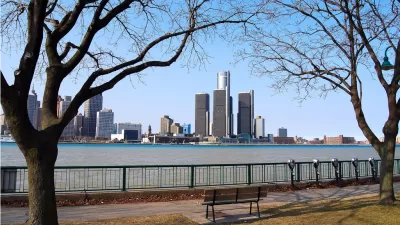The need to put Detroit under emergency management wasn't the result of a single failed strategy, but the culmination of decades of poor leadership, bad decisions, and "crossed fingers," report Monica Davey and Mary Williams Walsh.
"The financial crisis that has made Detroit one of the largest cities ever to face mandatory state oversight was decades in the making, a trail of missteps, of trimming too little, too late, of hoping that deep-rooted structural problems would turn out to be cyclical downturns that might melt away as the economy picked up," say Davey and Walsh.
"Some factors were out of the city’s control. As auto industry jobs moved elsewhere over the decades, for example, Detroit lost much of its affluent tax base. Lower than expected state revenue sharing did not help, nor did corruption allegations in the administration of , a mayor who resigned in 2008 and was convicted on Monday of racketeering and other federal charges."
"But recent findings from a state-appointed review team and interviews with past and present city officials also suggest a city that over the years was remarkably badly run."
“This was bad decisions piled on top of each other,” Gary Brown, the Detroit City Council president pro tem, said the other day. “It has all been a strategy of hope. You keep borrowing where every piece of collateral is already leveraged. You have no bonding capacity — you’re at junk status. You’re overestimating revenues and not managing the resources. Now the chickens have come home to roost.”
FULL STORY: For Detroit, a Crisis of Bad Decisions and Crossed Fingers

Alabama: Trump Terminates Settlements for Black Communities Harmed By Raw Sewage
Trump deemed the landmark civil rights agreement “illegal DEI and environmental justice policy.”

Study: Maui’s Plan to Convert Vacation Rentals to Long-Term Housing Could Cause Nearly $1 Billion Economic Loss
The plan would reduce visitor accommodation by 25% resulting in 1,900 jobs lost.

Planetizen Federal Action Tracker
A weekly monitor of how Trump’s orders and actions are impacting planners and planning in America.

Waymo Gets Permission to Map SF’s Market Street
If allowed to operate on the traffic-restricted street, Waymo’s autonomous taxis would have a leg up over ride-hailing competitors — and counter the city’s efforts to grow bike and pedestrian on the thoroughfare.

Parklet Symposium Highlights the Success of Shared Spaces
Parklets got a boost during the Covid-19 pandemic, when the concept was translated to outdoor dining programs that offered restaurants a lifeline during the shutdown.

Federal Homelessness Agency Places Entire Staff on Leave
The U.S. Interagency Council on Homelessness is the only federal agency dedicated to preventing and ending homelessness.
Urban Design for Planners 1: Software Tools
This six-course series explores essential urban design concepts using open source software and equips planners with the tools they need to participate fully in the urban design process.
Planning for Universal Design
Learn the tools for implementing Universal Design in planning regulations.
Caltrans
Smith Gee Studio
Institute for Housing and Urban Development Studies (IHS)
City of Grandview
Harvard GSD Executive Education
Toledo-Lucas County Plan Commissions
Salt Lake City
NYU Wagner Graduate School of Public Service




























